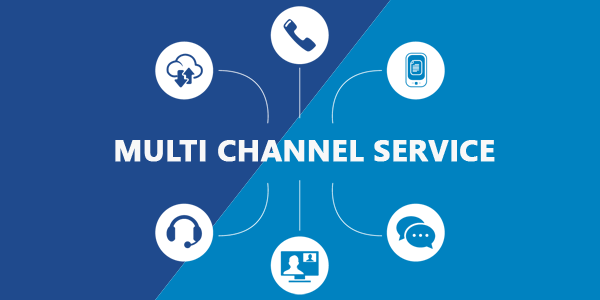In the age of multi-channel customer service, many businesses find delivering the same quality of customer satisfaction via each available customer service channel quite challenging. It’s nearly impossible to replicate the customer satisfaction of a well-established channel with one that was launched yesterday.
Moreover, it’s impractical for a business to adopt every new communication channel. Extensive research, time, and investment are required to maintain a fully functional customer service channel that only a small fraction of your customer base might use. Prioritizing channel strategy over sheer quantity ensures your focus remains on quality customer service rather than just multiplying channels.
Proactive Intervention: Implementing the right customer service channel strategy
Companies offering multiple service delivery channels must proactively identify and guide customers to the optimal channel for each transaction. This approach not only controls costs but also enhances revenue opportunities. For instance, a customer might prefer speaking directly to a service agent, but if an Interactive Voice Response (IVR) system can resolve their issue more efficiently, the company should encourage this choice.
Designing the Channel Architecture
Understanding transaction volumes, revenue, and service costs per channel can seem daunting. However, by segmenting customers based on their preferences and analyzing these metrics, businesses can design a robust and profitable channel architecture. Fusion CX advocates for deep data analysis to uncover cross-selling opportunities and manage costs without compromising customer satisfaction.
Incentivizing the Right Choice of Customer Service Channel Strategy
Encouraging customers to switch to more efficient channels can be achieved by incentivizing the right choices. Positive incentives, such as discounts or enhanced services, along with negative repercussions like fees for less efficient options, can guide customer behavior effectively. For example, a telecom company may encourage IVR usage by offering it as the first option, whereas opting for a live agent might incur additional costs.
Change Management for Smooth Channel Migration
Successful channel migration requires a thoughtful change management strategy, encompassing:
- Timing it Right: Introduce new channels when demand peaks or existing ones are overloaded. Providing continuity, such as transitioning telesales teams to chat support, can ease customer migration.
- Reducing the Risk of Failure: Implement training sessions and pilot programs to familiarize both staff and customers with new channels, minimizing risks and resistance.
- Communicating the Change: Generate interest in new channels by highlighting their benefits through advertisements or existing service channels. For instance, prompting customers via email support to try a faster chat service can effectively shift user behavior.
Fusion CX emphasizes cross-training agents to facilitate seamless transitions. When new service channels are introduced, keeping costs in check and maintaining service continuity.
Conclusion
Implementing a customer service channel strategy involves thoughtful analysis, proactive management, and strategic incentives. By guiding customers to the right channels, companies can enhance service efficiency, customer satisfaction, and ultimately, profitability. Have you evaluated your service channel strategy lately?

